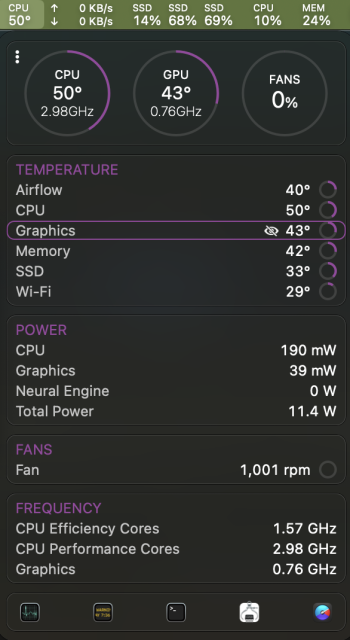Yes, i have bought iStat Menus for that, with the one problem, you have to Switch between Languages after re mount to get actual Temps and i have reported that Error to the Developers.Hi mate,
May I know how you able to see the temperature of WD SN770 drive? thanks
Temps after TM Backup... but after time it is going 32-39 regular use / also as boot drive and 49 Max.
Now i just do not need it as boot drive, but regularly update and boot from it as to file sync from my internal to it.
Last edited:



